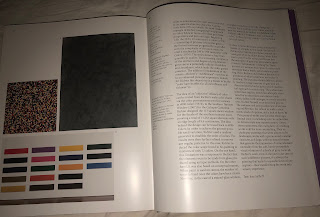Colour Wheels, Charts and Tables through History
This research shows the last four centuries visual organisation and sense of colour. Different forms and methods are used such as simple wheels to more complex colour pyramids also forming a basis on human emotion.
Richard Waller’s “Tabula Colorum Physiologica”, from “A Catalogue of Simple and Mixt Colours with a Specimen of Each Colour Prefixt Its Properties,” in Philosophical Transactions of the Royal Society of London, vol. 6 for the years 1686 and 1687 (1688).
Illustrations from the 1708 edition of Traité de la peinture en mignature, an artist’s manual attributed to “C.B.” (most likely Claude Boutet)
A chart from 1746 by Jaques-Fabien Gautier illustrating his theory that the primary colours are black and white, with red, yellow, and blue being secondary. Colours were thought to be drawn out of the shadows by the presence of light.
A shaded colour wheel from the pen of British entomologist Moses Harris, featured in his The Natural System of Colours (1766)
Image from Jacob Christian Schäffer’s Entwurf einer allgemeinen Farbenverein (1769) illustrating the idea of colour as genealogical and hierarchical: the principal colors are not presented as a continuous line but as families, each with its own coat of arms.
Colour wheel by the Austrian entomologist Ignaz Schiffermüller, featured in his treatise on colour Versuch eines Farbensystems (1772)
Georg Christoph Lichtenberg’s representation of the three-sided colour graph developed by the astronomer and mapmaker Tobias Mayer.
The “rose of temperaments”, a study from 1798/9 by Goethe and Schiller, matching twelve colours to human occupations and character traits, grouped in the four temperaments.
Goethe’s famous colour wheel, created in 1809, was used to illustrate the chapter “Allegorical, symbolic, and mystical use of colour” in his seminal work Farbenlehre (1810)
Two plates from James Sowerby’s A New Elucidation of Colours, Original, Prismatic, and Material (1809)
Philipp Otto Runge’s Farbenkugel (1810). The top two images show the surface of the sphere, while the bottom two show horizontal and vertical cross sections.
A chart showing “simultaneous contrasts” from A Class-Book of Colour: including colour definitions, colour scaling, and the harmony of colours (1895) by Mark Maycock.
Circular chart showing “complementary contrasts” from A Class-Book of Colour: including colour definitions, colour scaling, and the harmony of colours (1895) by Mark Maycock.
Frontispiece to Annie Besant and Charles Leadbetter’s 'Thought Forms' (1905), matching colours to particular emotions.
Illustration from The Principles of Advertising Arrangement (1912) by
Frank Alvah Parsons.
Three plates from Robert Ridgeway’s Colour Standards and Colour Nomenclature (1912)








































